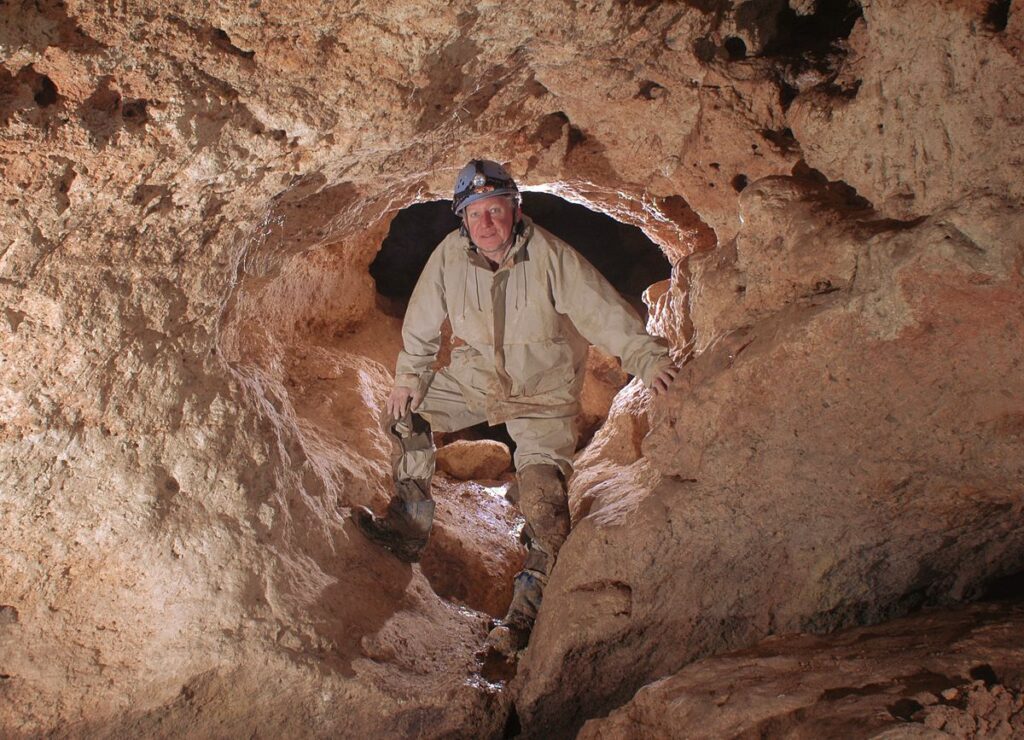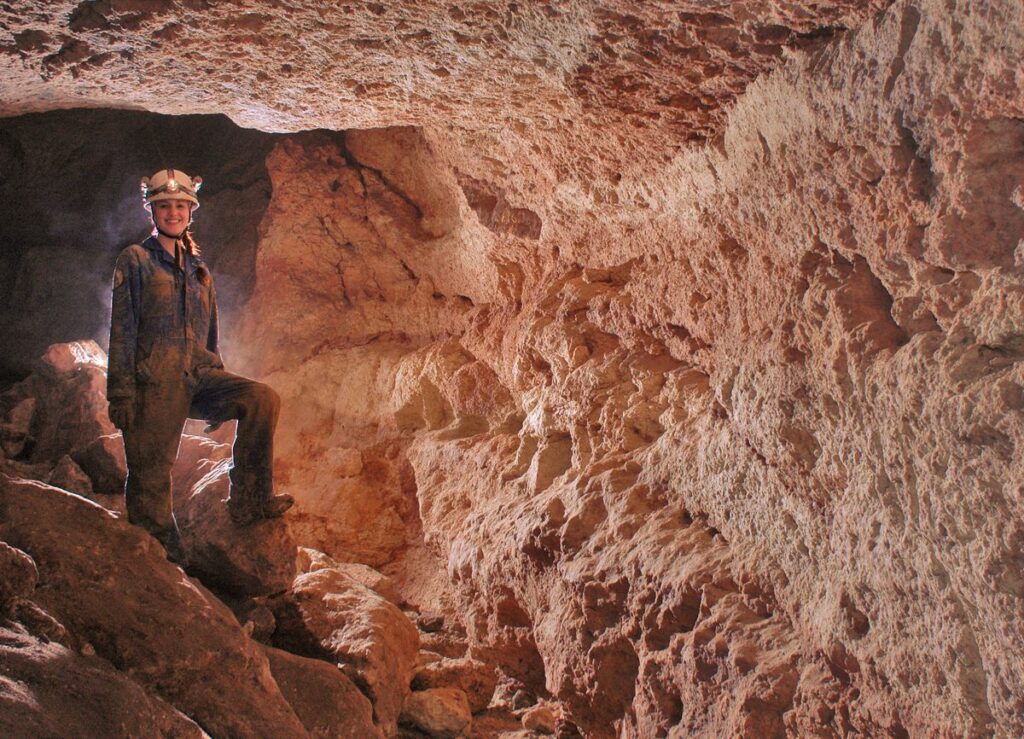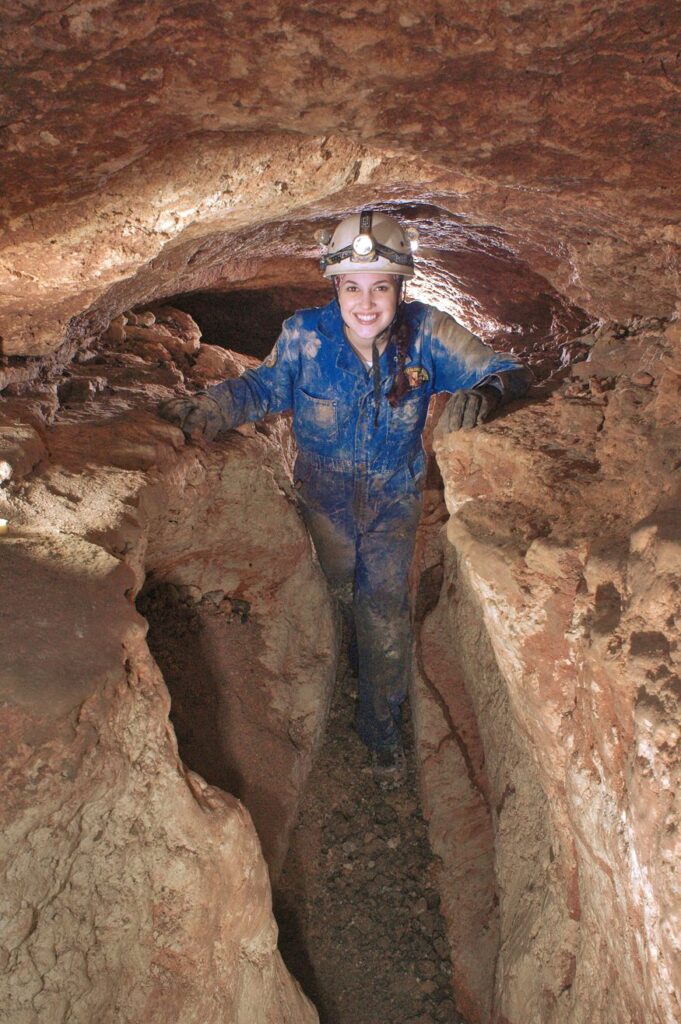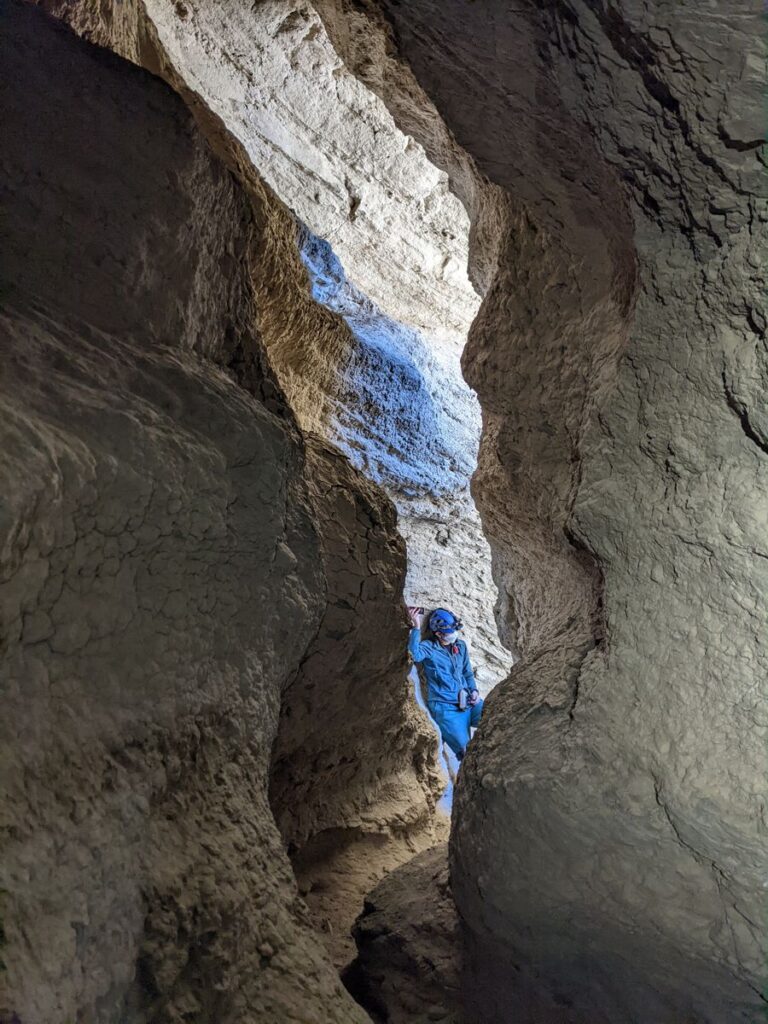
These caves usually form in the California desert
Soil caves develop in the sediments of ancient, dry lake beds. They are an important refuge for desert wildlife
Sediment Cave Geology
Sediment caves form in thick beds of sediment from former lakes. Some times, these ancient lake beds end up high and dry. Erosion cuts downward creating arroyos, canyons and valleys so that when it does rain in the desert, the water has a place to flow to. Often it will seep into the sands and silts of the former lake. There that water can carry away particles of sand or silt eroding the old lake bed from the inside out. These caves are also called giant soil pipes. Layers of minerals or cracks in the deep dirt create places where it is more open and easier for the water to flow, carry away the grains of sand and slowly create the caves. Sediment caves are not long lived. A big summer thunderstorm in the right location can fill one of these caves with raging water that may significantly enlarge and alter the cave in just a few hours. Over time and many of these storms, the caves are eroded away.
When conditions are right, many of these caves can form near each other.
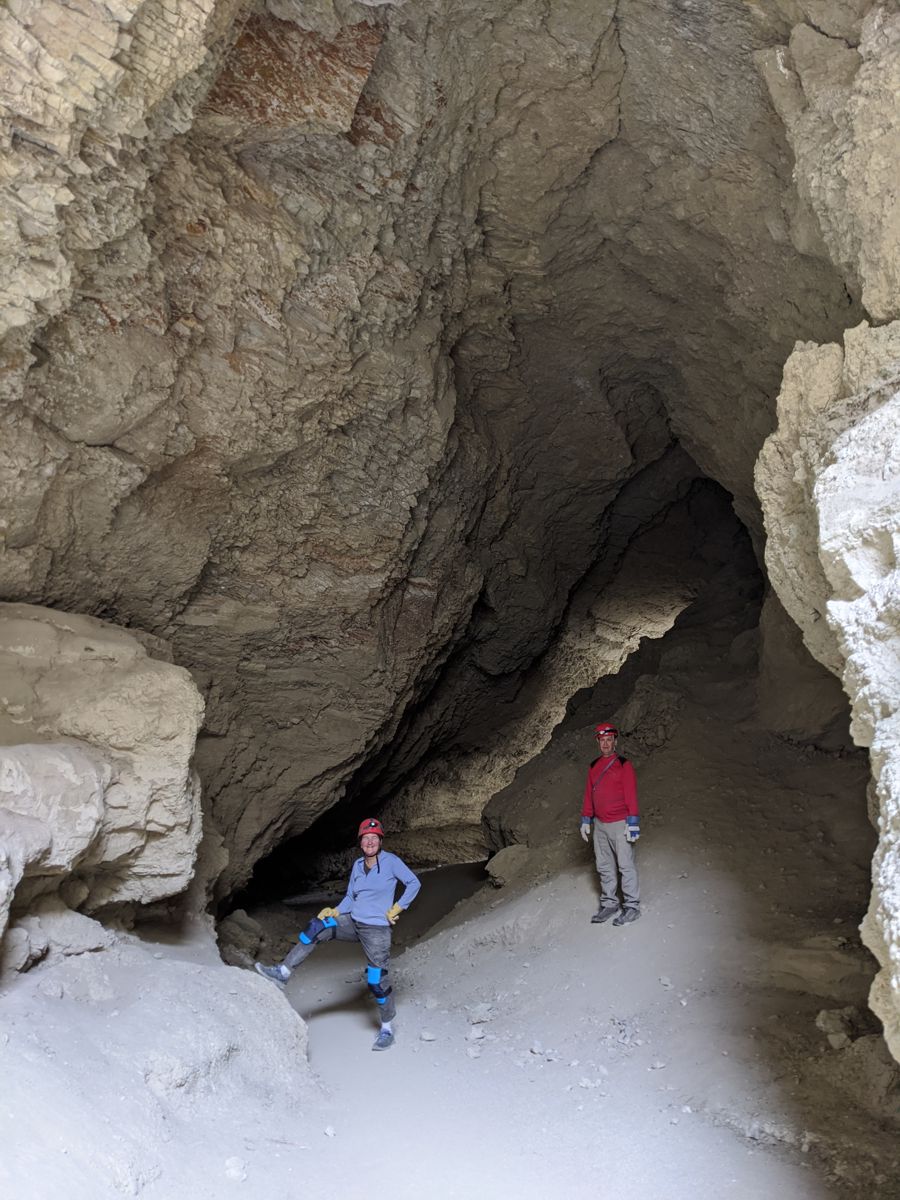
In northern California on private land is one of the state’s most unusual caves. Clay Cave appears to be a soil pipe cave, like the ones above, but it is formed in a wet environment near the coast and in much finer particles of sediment – clay. This cave is also biologically rich with many cave adapted species, some of which are unique to this cave. Check out images from Clay Cave below. These photos are by Dave Bunnell.
